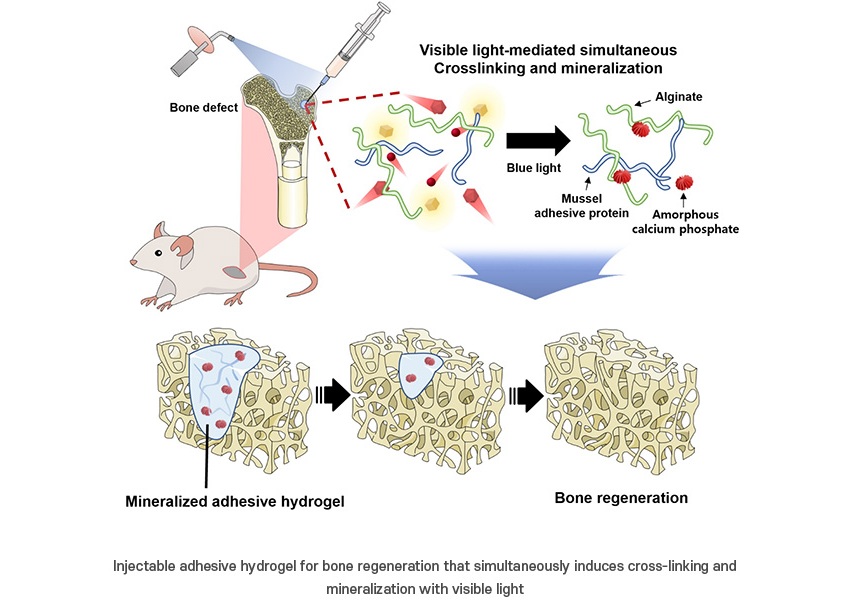Injectable Adhesive Hydrogel Uses Harmless Visible Light for Bone Regeneration
Posted on 01 Jan 2025
Bone defects, which can result from trauma, infections, or congenital conditions, are becoming increasingly prevalent, particularly in aging populations. Traditional treatments often involve bone grafts combined with serum or bioadhesives to fill the defect. However, current injectable hydrogels face several challenges, such as difficulty in maintaining their shape within the body and insufficient adhesive strength. Additionally, conventional methods using bone grafts and adhesive materials often fail to achieve both "bone regeneration" and "adhesion" simultaneously. A new study has led to the development of an innovative injectable adhesive hydrogel designed for bone regeneration, which uses harmless visible light to facilitate both cross-linking and mineralization without the need for bone grafts.
This new hydrogel system, developed by scientists at Pohang University of Science and Technology (POSTECH, Gyeong Buk, Korea), uses visible light—safe for human tissues—to trigger cross-linking, a process where the hydrogel’s components bond and harden. Simultaneously, the system encourages the formation of bone-building minerals like calcium and phosphate within the hydrogel, boosting mineralization. While earlier research explored light-based methods for similar applications, challenges arose, including the need to separately prepare and mix bone grafts and adhesive materials, as well as weak bonding of the components, which led to degradation over time. The newly developed hydrogel precursor is made from alginate (a natural polysaccharide derived from brown algae), RGD peptide-containing mussel adhesive protein, calcium ions, phosphonodiols, and a photoinitiator.

The coacervate-based formulation, which is immiscible in water, ensures that the hydrogel retains its shape and position after injection into the body. Upon exposure to visible light, the hydrogel undergoes cross-linking, and amorphous calcium phosphate—a material that serves as a bone graft—is simultaneously formed. This process eliminates the need for separate bone grafts or adhesives, enabling the hydrogel to provide both bone regeneration and adhesion. In experiments with animal models that had femoral bone defects, the hydrogel was successfully injected, adhered securely, and effectively delivered the necessary components for bone regeneration. These findings were published in Biomaterials, marking a significant advancement in the field.
"The injectable hydrogel system for bone regeneration developed by our research team represents an innovative alternative to conventional complex treatments for bone diseases and will greatly advance bone tissue regeneration technology," said POSTECH's Professor Hyung Joon Cha who led the research team.














